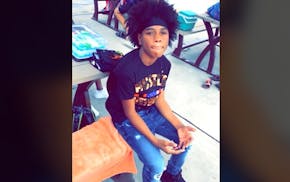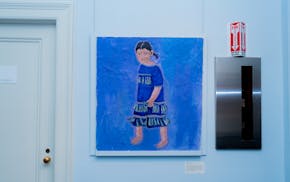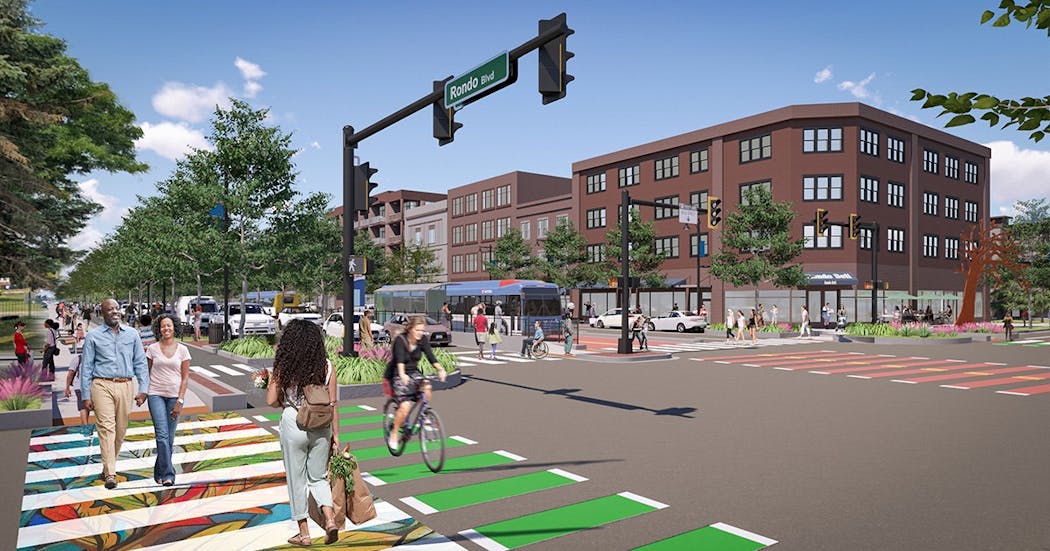When I was a kid, the church I attended in Milwaukee with my family sat in one of the city's predominantly Black, impoverished neighborhoods. The "projects" stood a block away, next to a corner store, where we'd sneak out and buy grape sodas and Mike and Ikes.
There was a park down the street and we would hang out there during summer camps. We'd wave to our friend, "Cheese" — no idea why they called him that — and his family on our way. They lived across the street from the church.
But every time I return to that spot, another piece of my childhood seems to vanish. The corner stores and affordable housing complexes have been replaced by $300,000 condos occupied by middle-class families and residents who don't look like the folks from the old neighborhood.
I wonder if the same erasure will continue here, as plans for a new Rondo neighborhood persist. I worry that the name "Rondo" is nothing more than a pawn for future economic development that will inadvertently benefit, above all, affluent, white Minnesotans and business owners but not the Black community members and direct descendants of St. Paul's greatest tragedy — against the wishes of its visionaries.
Our Streets Minneapolis cited Milwaukee as an example in its "Reimagining I-94″ report that details a proposal to replace a stretch of the interstate between St. Paul and Minneapolis. It's one of a handful of concepts, including ReConnect Rondo — a plan to build a land bridge over the highway, an idea that received a $2 million federal grant — that could help restore the economic nucleus the highway erased through racist federal policies that destroyed St. Paul's Rondo neighborhood in the 1950s and 1960s. The highway also stole seeds of generational wealth in the local Black community.
Keith Baker, the executive director of ReConnect Rondo, has called the project "an African-American cultural enterprise district."
"It really is a pretty significant chunk of land," Baker told the St. Paul Neighborhood Network in 2022. "It allows for upwards of 13 acres of new, open park space, just as one illustration. The potential of 576 housing units. A business incubation center. Possibly, an outdoor botanical garden. Who knows? So there are a lot of possibilities that can go on top of 21 acres."
Rep. Betty McCollum, D-Minn., said the initiative could right the historic wrong that unfolded in the Rondo neighborhood while allowing "reconciliation and healing for a community that was cruelly ripped apart," according to a news release issued by the city of St. Paul.
Our Streets Minneapolis also acknowledges the potential impact on the Rondo neighborhood. The group's illustrations show a bright and connected community with parks, businesses and walkable spaces. Its report also cites the potential for "reparations."
"While this damage can never be undone, the 'Rethinking I-94′ project is an opportunity for MnDOT and government partners to take significant steps toward reparations for this terrible injustice," the report states. "Highway removal would free up dozens of acres of land that is currently occupied by the highway for new uses. This land could be used to create new home and business ownership opportunities and community and public spaces/centers, accompanied by protections, like a land trust, to ensure that they are affordable for surrounding residents."
Yeah, but what does that even mean? And who will live in those new homes? Who will own those businesses? I'm not yet sure if this is about improving the Rondo neighborhood or just creating more bike lanes so folks in St. Paul can get to their favorite coffee shops on Saturday afternoons.
Unless there is a sizable pot of money available for Black residents in the Rondo neighborhood to own homes, minority contractors to handle a reasonable portion of construction, Black business owners to start and expand their entrepreneurial ventures and organizers to erect community-based activities centers for youth, then how will Rondo get even a portion of what it lost? More importantly, how will it keep it?
I am in favor of ideas that will not only restore the area, but also create an economic boost for a community impacted by injustice. Yet, I do not see explicit mechanisms to ensure that those most affected — Black folks in the Rondo neighborhood — will not only live, work and play in these new, imagined spaces but also that they will not be robbed of this access over time. I'd rather not watch another Black neighborhood thrive in Minnesota only for white affluence to bulldoze through it 20 years from now.
That's my fear.
Because all of this feels like Milwaukee to me and the neighborhood on the edge of downtown where the church still sits today.
Every time I go home, I stand on the sidewalk, where we used to frolic after church, and I look across the street, where the yellow house once stood and a friendly family would wave at us from their porch. Then, I think to myself: I hope Cheese is doing well.

Medcalf: This summer, let's all be more vigilant about our children — and everyone else's

Medcalf: Mia program provides safe space for young people to create

Medcalf: George Floyd's daughter, now 11, on life without her dad: 'It's hard'



